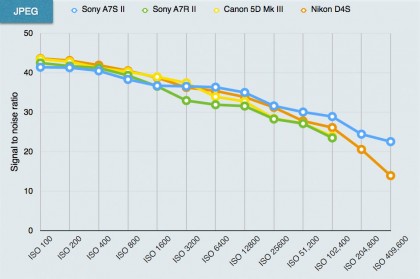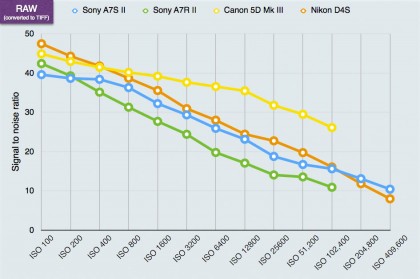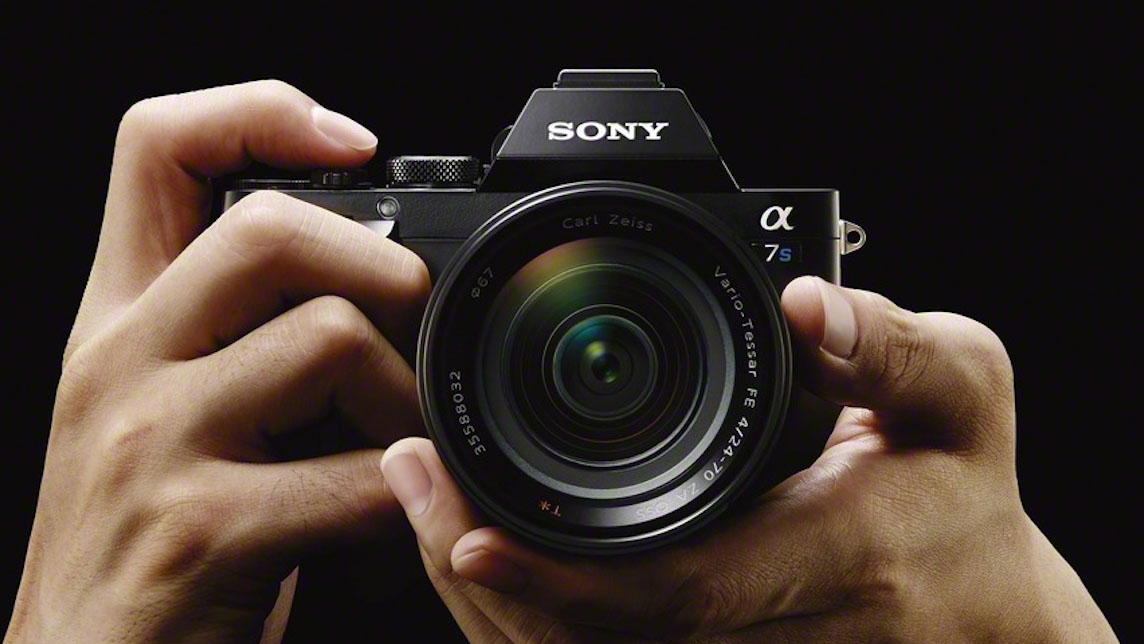Why you can trust TechRadar
The signal to noise ratio measures the amount of noise in the image compared to actual image data. The higher the number, the less noise you'll see in the camera's images. You'd expect the A7S II to do well here because its relatively large pixels should capture more light relative to the baseline background noise.

JPEG signal to noise ratio analysis: The A7S II is at or near the top of this group for noise levels, but its advantage is slim at best, and even then only at ISO settings of 6400 and above. Even the 42-megapixel A7R II isn't far behind.

Raw (converted to TIFF) signal to noise ratio analysis: These results are dominated by the remarkable and unexpected performance of the EOS 5D Mark II. It beats the A7S II into third place – it's beaten narrowly across most of the ISO range by the Nikon D4S.
Current page: Lab tests: Sony A7S II signal to noise ratio
Prev Page Lab tests: Sony A7S II dynamic range Next Page Verdict